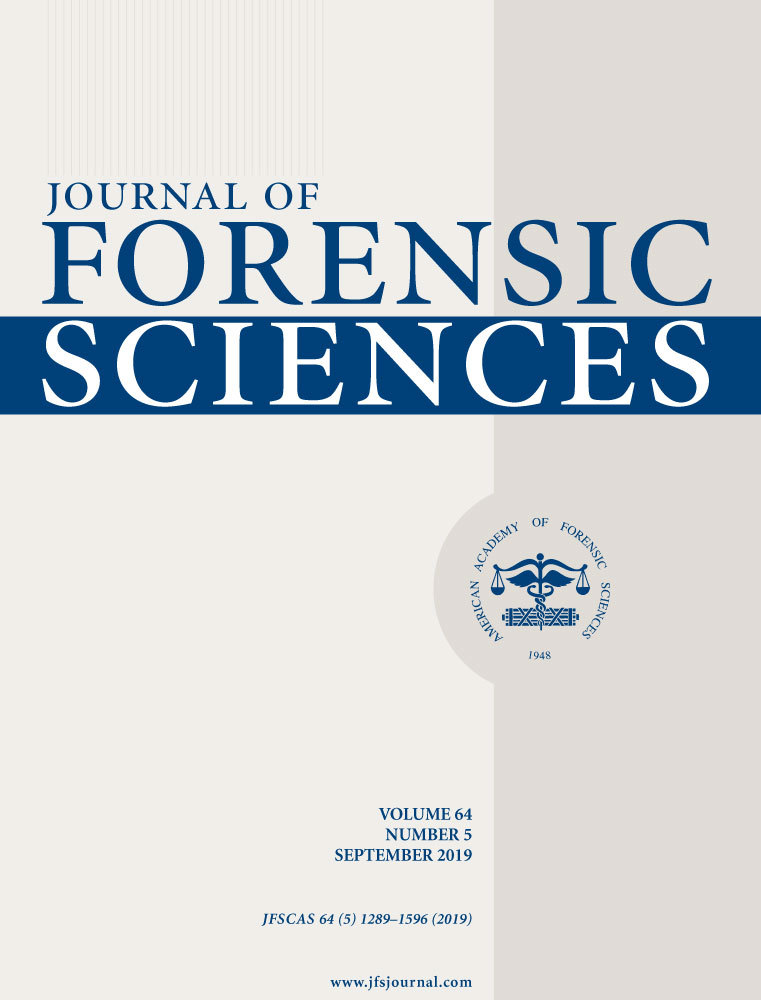Discordance of Gross and Histologic Findings in Estimating the Range of Fire of Gunshot Wounds†
Abstract
Forensic pathologist use soot and/or stippling surrounding entrance gunshot wounds in categorizing range of fire. If absent, some pathologists suggest utilizing histology when the range is diagnostically critical. This study investigates the concordance of macroscopic and microscopic findings in estimating range of fire by evaluating gunshot entrance and exit wounds made through human tissue analogs at defined distances using two handgun calibers. Examination of over 150 entrance wounds verified the ease of visually detecting soot from a muzzle distance of contact to 1 foot (30.5 cm), and its absence at 9 feet (274.3 cm). Distinctly apparent was bullet wipe surrounding the entrance wounds regardless of muzzle distance. Although variations existed, dark material was histologically identified in many skin, soft tissue, and bone sections at all ranges with both calibers. These nonparallel results decrease the dependability of histology for range of fire estimation and reinforce using gross observation.




